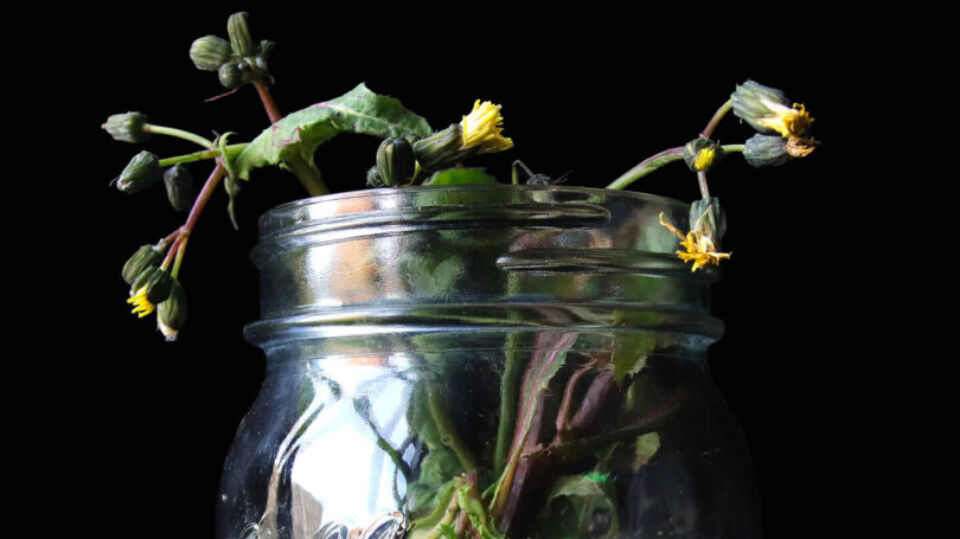Mortality was a common theme in Dutch Old Master paintings of the 16th and 17th centuries, with the vanitas still life genre depicting scenes of luxury undercut by reminders of the grave. Bountiful plates of food or huge blooms were paired with skulls, guttering candles and wisps of smoke, each a evoking Memento Mori – “remember you must die.” Contemporary artist Stephen Johnston (b. 1987) continues this rich tradition, with paintings that focus on food slowly decomposing in jars, deconstructed cakes and roadkill. His most recent series, Nocturnal, was shortlisted for the 2025 Aesthetica Art Prize, and is now on display at York Art Gallery. In each painting, Johnston depicts fragile flowers, suspended in glass in various states of decay. It is a quiet reflection on the passage of life, death and everything in between.
A: How did you first begin working as an artist?
SJ: Art, for me, began at a very young age – scribbling on paper, then on walls, as if to insist upon my existence through lines and smudges. There was always a current underneath, something beyond me urging expression. Making marks was how I made sense of things, how I organised the chaos. Over time, devotion supplanted instinct. Study at the University of Ulster, where I graduated in 2010, offered the structure to turn passion into a vocation. That’s where the calling became conscious: an artist not by inclination but by deliberate design.
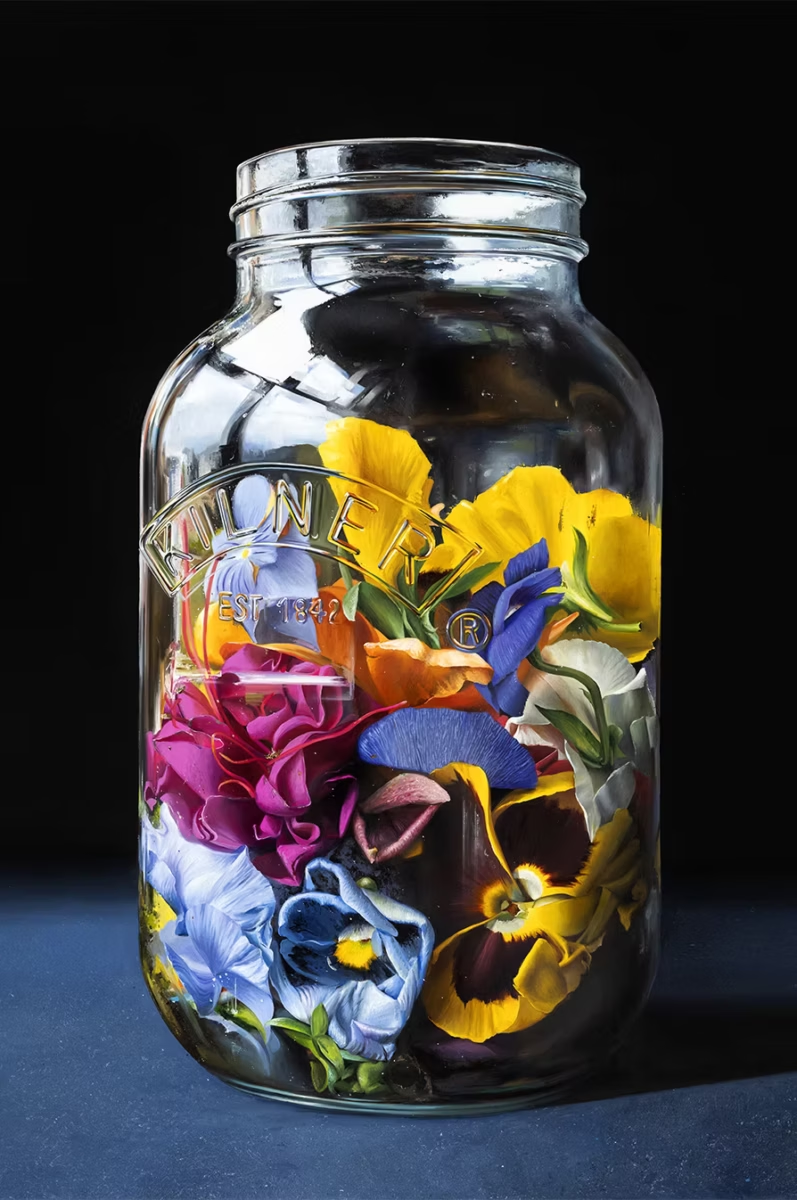
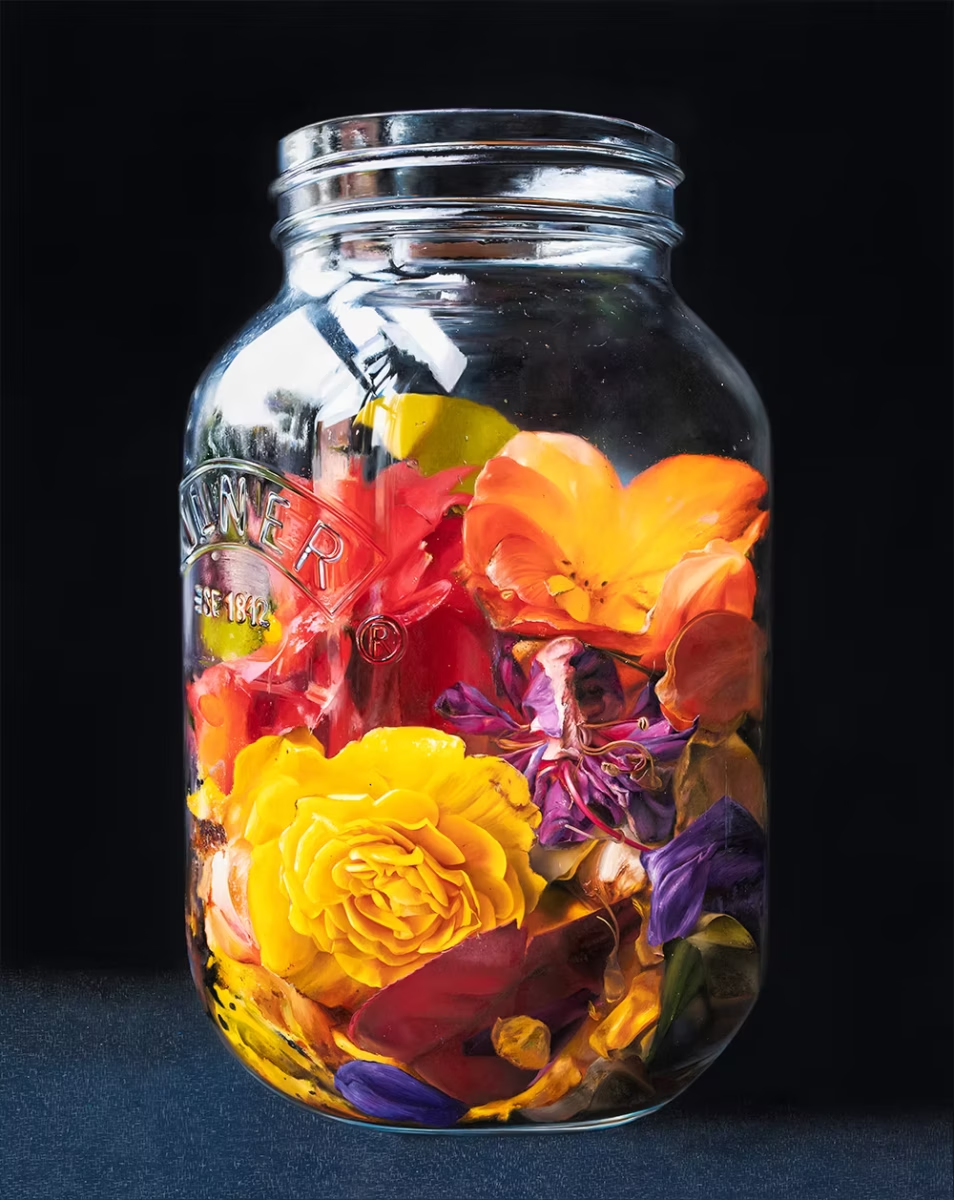
A: What initially inspired you to explore the theme of memory and impermanence?
SJ: It began with exhaustion of the manic gloss of our age. I found myself drawn to the quiet truth of perishability. The more I looked, the more everything seemed to hover at the edge of vanishing. Flowers became my shorthand for that realisation, their collapse as eloquent as their bloom. I was drawn to that tension, to the fragile theater of beauty and decay. It’s rooted, I think, in the same truth the old scriptures name when they say that we wither like grass. The inevitability of it doesn’t feel bleak to me – it feels clarifying. I want to make work that holds still long enough for us to notice how brief everything is. A reminder that life flares and fades with humbling speed. My work tries to live within that awareness, to seek what survives the withering. I think there’s comfort in acknowledging what slips away. Memory becomes not a record but a gesture, a way of keeping company with what is no longer here.
A: Can you talk us through your creative process?
SJ: I work one painting at a time, because each demands monogamy. The process starts in the lens –staging and photographing a still life that whispers of balance or disquiet. Composition is intuitive but ruthless: I move blooms like chess pieces until the image feels inevitable. The photograph becomes my anchor for the slow rhythm of painting, keeping faith with the original moment even as it changes in recollection. Time becomes a collaborator—each layer of paint altering my relationship to the subject, deepening it. I don’t aim to imitate the work or be a slave to the reference; rather, I’m free to interpret it, to follow the painting where it wants to go. By the end, the piece becomes less about replication and more about resonance.
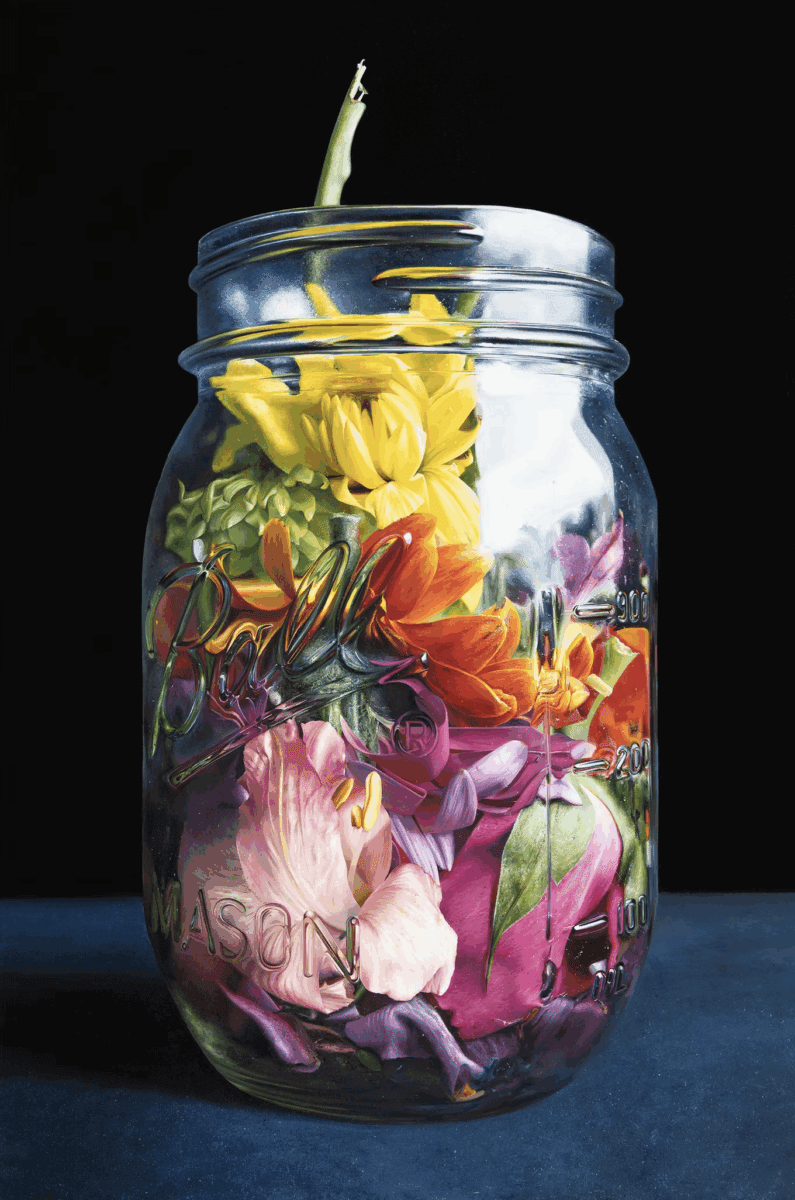
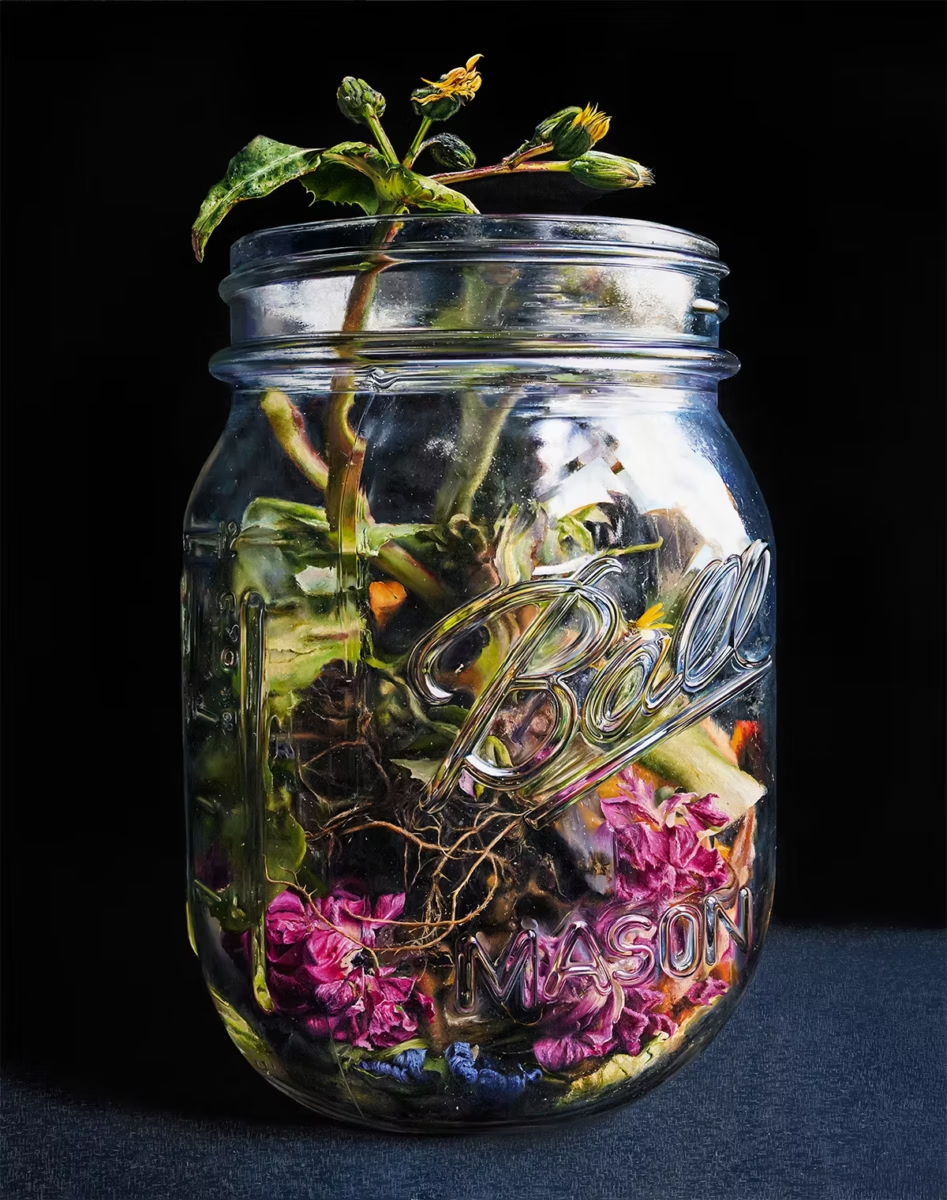
A: Where do you find the balance between tradition and contemporary perspective?
SJ: It’s an ongoing conversation, not a conflict. Still life is my inheritance, but I see the jar – often central – as both vessel and coffin. It contains and commemorates. The classical and the modern entwine there: light refracted through glass speaking to our own era’s obsession with seeing and being seen. I think of tradition as a scaffold, not a constraint – it offers stability while letting me question and redefine the visual language. Still life in particular feels like an archive of human attention – a way of recording what mattered within reach. My work borrows that vocabulary of observation, but it’s inevitably shaped by a contemporary unease. We live surrounded by images, scrolling through them at a speed that erases their weight. Painting slows the act of looking back down to its proper tempo.
A: What do you hope audiences take away?
SJ: I want viewers to feel the tremor beneath beauty – the knowledge that it won’t last. In those moments of contact, perhaps they’ll rediscover gentleness, the aching clarity that comes with presence. To see the fragility of flowers is to face our own; and from that knowledge, I hope, comes contemplation. I think of each work as a meditation on what remains unsaid – a mirror held up to our desire for stillness in an accelerating world. If the viewer walks away more attuned to the intervals of their existence, then the painting has worked. Art reminds us that transience isn’t tragic, it’s what makes meaning possible.
The Aesthetica Art Prize Exhibition 2025 is at York Art Gallery until 25 January.
stephen-johnston.co.uk | yorkartgallery.org.uk
Find out more about the Aesthetica Art Prize 2025 Shortlist here.
Words: Emma Jacob & Stephen Johnston
Image Credits:
1. Stephen Johnston, Flowers in a Jar (no. 11).
2. Stephen Johnston, Flowers in a Jar (no. 5).
3. Stephen Johnston, Flowers in a Jar (no. 9).
4. Stephen Johnston, Flowers in a Jar (no. 4).
5. Stephen Johnston, Flowers in a Jar (no. 8).


